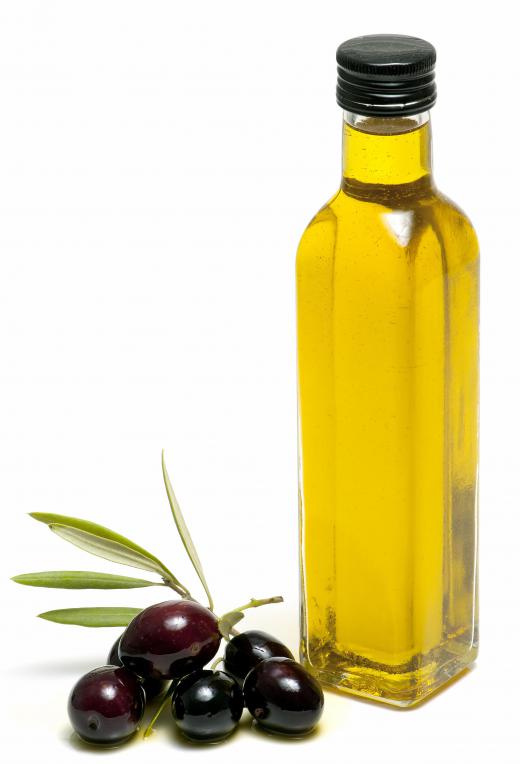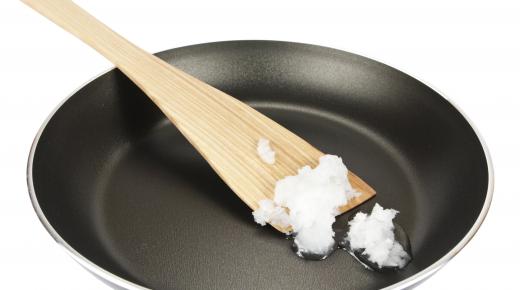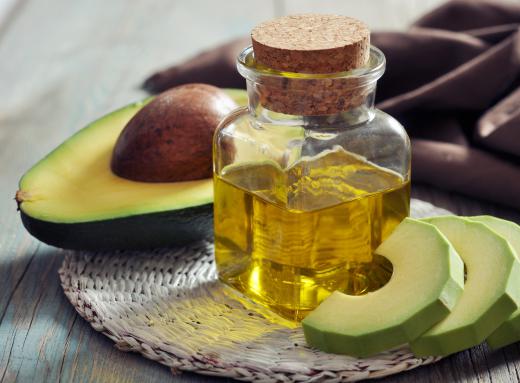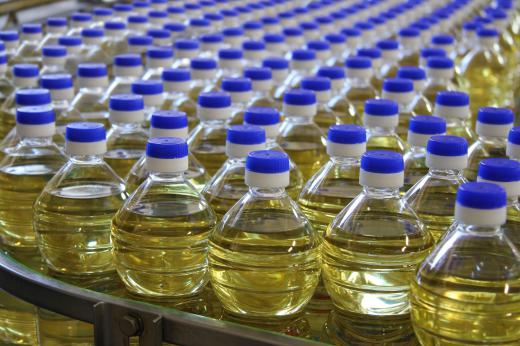What is the Smoke Point?
Smoke point is a term which refers to the point at which cooking oil begins to break down and give off fumes, or smoke. At this temperature, the oil begins decomposition, gives off an noxious odor, and looks burnt. If the oil continues to rise in temperature, it can reach the flash point, when it will catch on fire.
Cooking oils come from a wide variety of sources, with unique flavors, nutritional benefits and heating properties such as smoke points. Many other factors can also lower the flash point of oil, such as the presence of foreign organic material, the use of salt, the number of times the oil has been reused, and whether or not the product is a mixture of different oils. Saturated fats — those which are solid at room temperature — including lard, butter, and bacon grease, begin to smoke at relatively low temperatures. These products are considered to be less healthy, and should only be used to sauté or bake at relatively low temperatures.

Another factor which affects the smoke point of oil is the amount of refinement and processing it undergoes. Unrefined oil is generally cold-pressed and not subjected to heat or chemicals. As a result, it often contains organic material from the source, which lowers the temperature at which the product can be used effectively in cooking. One example of this is unrefined canola oil, which has a smoke point of under 225 degrees Fahrenheit (107.2° Celsius), while refined canola oil is an excellent cooking oil with a smoke point of close to 400 degrees F (204.4° C).

Olive oil is available in an extremely wide range of refinements and properties, and is generally ranked by the acidity and the method of extraction. Virgin olive oil is cold pressed and contains olive residue, giving it a much darker color. It is popular because it has the most potent flavor, but also the lowest flash point, which limits its use as a cooking oil. The best use for virgin olive oil is sautéing, as a dressing on salads, in marinades, or with dipping spices for bread. Refined olive oil is processed with heat and chemicals which produce a clear color and give the oil a higher smoke point.

Avocado oil, which has a smoke point of 500 degrees F (255° C), is an excellent source of vitamins and can be used for cooking, on salads, with bread, or over vegetables. It is more expensive, however, and is not necessarily practical for general cooking. Canola oil, also called rapeseed oil, is from a plant in the turnip family. Like avocado oil, it is low in saturated fats and a rich source of essential omega-3 fatty acids. Canola oil is less expensive than avocado oil, and a great choice for frying and general cooking.

While oils with a low smoke point are great for sautéing, low temperature baking and table use, oils chosen for frying should be able to safely reach temperatures as high as 375 degrees F (190.5° C). If deep fat frying is desired, then the oil should have a smoke point of at least 450 degrees F (232° C). Foods that are fried at higher temperatures have a better texture and absorb much less fat than foods fried at lower temperatures. Corn oil, which is also used in salad dressings and margarine, is a good choice for deep fat frying.
AS FEATURED ON:
AS FEATURED ON:















Discussion Comments
Olive oil is fine for a lot of things, but I find it's better for cooking at slightly lower temps. It can stand higher heat, but you have to be really careful about making sure you don't overheat it.
I prefer cooking with olive oil when possible, but I do keep an eye on it when I use it. I use the "light" olive oil usually, when cooking so I won't get a strong flavor in the food.
If you're making a roux, then the best oil to use is probably canola or something else with a slightly higher smoke point.
Peanut oil is also a good oil for frying, and the oil of choice for deep frying a turkey. Its smoke point is about 450 degrees Fahrenheit, or so. In the South, you can get it in gallon containers.
I have a friend who lives in Southern California. Her husband is from Louisiana and is a great cook. He searched all over for peanut oil, but apparently, it's scarce in that area. He finally found it the Rampart area of Los Angeles. He went to a grocery store where the majority of customers were African-American, and more accustomed to frying food.
The last time he went home to Louisiana, he said he carried about 10 gallons of the stuff back to Cali.
Post your comments